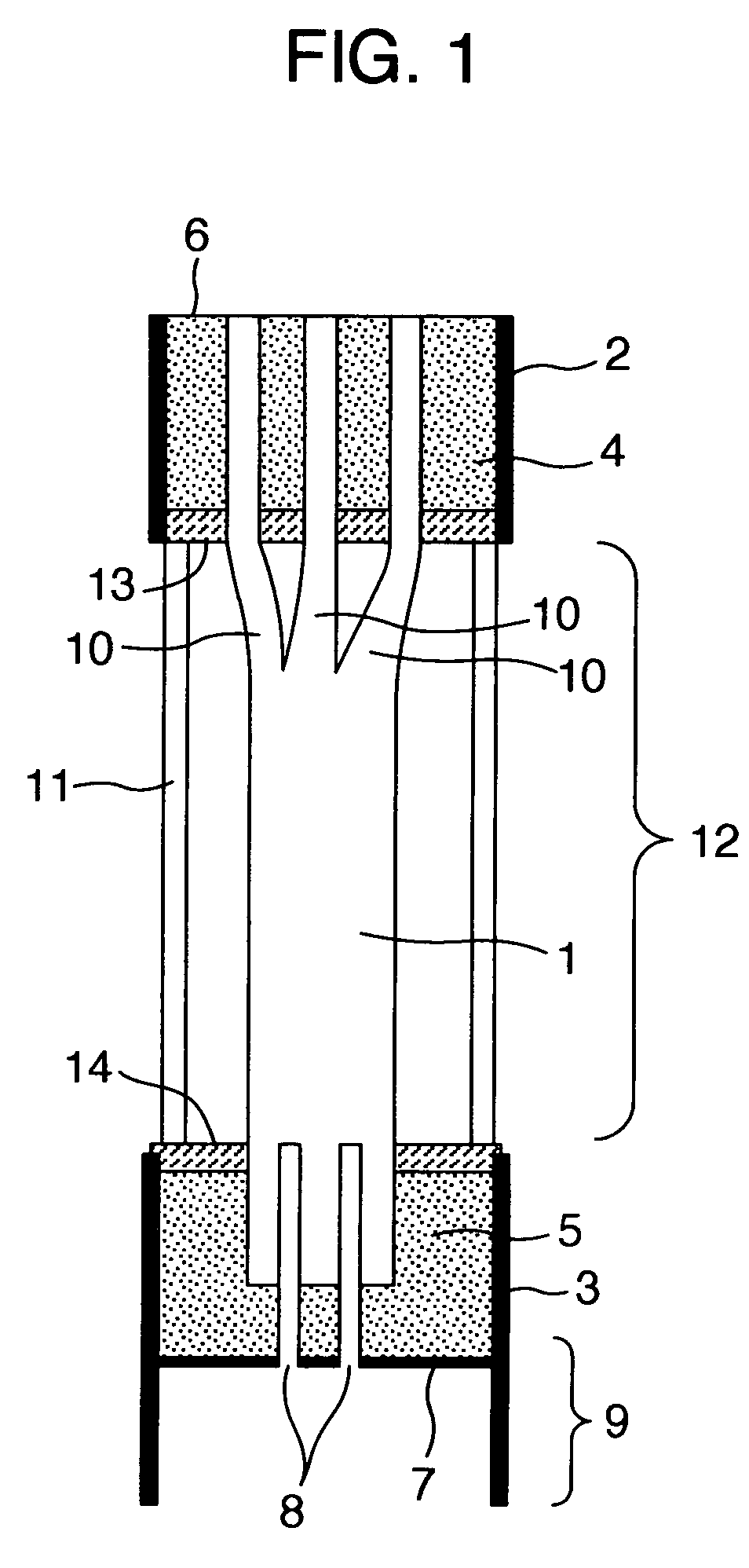Membrane cartridge, membrane separating device, and membrane separating method
- Summary
- Abstract
- Description
- Claims
- Application Information
AI Technical Summary
Benefits of technology
Problems solved by technology
Method used
Image
Examples
example 1
[0069] A cylindrical hollow fiber membrane cartridge described below was produced. The opposite ends of each of the plurality of hollow fiber membranes were fixedly bonded to the cartridge. The cartridge had a cartridge head fixedly bonded to the outer periphery of one end in a liquid tight manner and a lower ring fixedly bonded to the outer periphery of the other end in a liquid tight manner. The cartridge had a membrane area of 25 m2. The hollow fiber membranes were precision filtration membranes made of polyvinylidene fluoride and had a pore size of 0.1 μm. Each of the hollow fiber membranes had an outer diameter of 1.4 mm and an inner diameter of 0.8 mm. The effective length of the membrane between the filtration section interfaces of the cartridge head-side and lower ring-side adhesion fixation layers was 2,000 mm. The adhesion fixation layers at the opposite ends of the hollow fiber membranes had a diameter of about 150 mm.
[0070] At the filtration section interface of the car...
example 2
[0076] At the filtration section interface of the cartridge head-side adhesion fixation layer, 110 hollow fiber membranes were bundled per small bundle. The number of small bundles was 30, and the spacing between the small bundles was 1.5 mm. A membrane separation device was produced in the same manner as in Example 1 except it had an arrangement as shown in FIG. 4(b).
[0077] The membrane separation device was immersed in an activated sludge tank and operated as in the case with Example 1. Then, the inter-membrane differential pressure remained stable at −15 to −20 kPa for three months. After the three months of operation, sludge fouling or contaminants adhering to the cartridge weighed 2.53 kg, indicating a small amount of the fouling.
example 3
[0078] At the filtration section interface of the cartridge head-side adhesion fixation layer, 110 hollow fiber membranes were bundled per small bundle. The number of small bundles was 30, and the spacing between the small bundles was 2.0 mm. A membrane separation device was produced in the same manner as in Example 1 except it had an arrangement as shown in FIG. 4(c).
[0079] The membrane separation device was immersed in an activated sludge tank and operated as in the case with Example 1. Then, the inter-membrane differential pressure remained stable at −15 to −20 kPa for three months. After the three months of operation, sludge fouling or contaminants adhering to the cartridge weighed 2.03 kg, indicating a small amount of the fouling.
PUM
| Property | Measurement | Unit |
|---|---|---|
| Distance | aaaaa | aaaaa |
| Distance | aaaaa | aaaaa |
| Adhesion strength | aaaaa | aaaaa |
Abstract
Description
Claims
Application Information
 Login to View More
Login to View More - R&D
- Intellectual Property
- Life Sciences
- Materials
- Tech Scout
- Unparalleled Data Quality
- Higher Quality Content
- 60% Fewer Hallucinations
Browse by: Latest US Patents, China's latest patents, Technical Efficacy Thesaurus, Application Domain, Technology Topic, Popular Technical Reports.
© 2025 PatSnap. All rights reserved.Legal|Privacy policy|Modern Slavery Act Transparency Statement|Sitemap|About US| Contact US: help@patsnap.com



